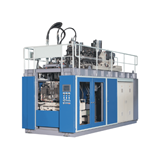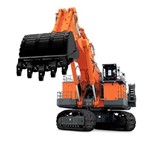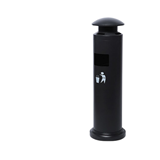That's the view of Professor Colin Ward of the CRC for Coal in Sustainable Development and University of NSW, after years of investigating the make-up of Australia's coal ashes.
"Australia's 40 power stations produce 12-13 million tonnes of fly ash a year, only a sixth of which currently goes to economic products like cement and concrete. Most of it is currently used as landfill and is both a cost and a lost opportunity. There is a lot more we can do with fly ash," he says.
Prof. Ward says that, contrary to common opinion, fly ash produced from the burning of Australian coals is low in toxic elements by world standards, and most of these are locked up in any case and unlikely to leach out. In such cases the ash is suitable for a range of valuable applications including improving acid or sandy soils, production of synthetic zeolites, as a solution to the intractable problem of acid mine drainage, and as backfill to stabilise former underground and open-cut mines.
"Fly ash usually acts as a form of cement and you can also produce concrete products and different types of aggregate from it for a host of end-uses. Using fly ash for these purposes also means we do not need to mine and burn as much limestone for cement production, reducing limestone use as a source of greenhouse gas emissions."
However the current regulatory environment, industry and public attitudes still treat fly ash as a waste, which has prevented people from appreciating its potential value as a resource, he adds.
"The content of potentially toxic trace elements in Australian coal ash is low by world standards and, of these elements, only a small proportion - about 20 per cent or less - is actually mobilisable. Many of our coal ashes are likely to be environmentally safe - and indeed desirable - for other uses."
Most fly ash is currently dumped in dams or used as landfill close to power stations. However some power stations and coal mines in Queensland and WA have begun to appreciate its value as mine backfill, setting a new trend for the industry in sustainable use of former 'waste' materials.
"Where there is a tendency for trace elements to leach out of the ash, we have found that if it is put back into a coal mine the surrounding rocks will generally lock them up to a great extent and stop them getting into the groundwater."
At the same time up to half of Australia's fly ashes are alkaline, which offers scope for their use in correcting problems such the growing acidity of the nation's agricultural soils, or acidic water draining from metal sulphide mines. The ability of flyash to soak up water also makes it promising for helping to 'drought-proof' sandy soils by making them more absorbent.
"Transport is a cost and the end-use needs to be sufficiently close to the power station to make shipment of the fly ash to the site where it is used worthwhile," Prof. Ward observes. "However many of these end uses result in added value, which may defray the cost of moving the material."
Using Australia's huge resource of fly ash is currently held back by a mindset and regulatory environment which sees it as "waste", he says.
"I'd like people to think more rationally about fly ash. There is potential to use a lot more of the 13 million tonnes we produce each year, and it isn't regarded as waste, it's a big potential resource. Correctly handled, it presents little toxic risk and considerable value."
There is a need to update the regulatory environment so fly ash can be more widely used as mine backfill or in soil treatment, and also to resolve the issue of the transfer of long-term liability from one owner to others which was still an impediment to its use.
The Chief Executive of CCSD, Mr Frank van Schagen said the organisation's scientific contribution was based on a deep understanding of Australian coal performance developed over thirteen years in existing and new power generation and steel making technologies.
"The deployment of these technologies will deliver the improved environmental performance required to address many of the environmental challenges facing us today," he said. "Better utilising byproduct streams such as fly ash is an example of this."











